Mastering Bitcoin Mining Fees: A Comprehensive Guide
Bitcoin fees are what you pay to get your transactions processed on the Bitcoin network. These bitcoin fees ensure transactions are prioritized and help secure the network. In this article, we’ll detail how these fees work, what influences them, and strategies to minimize them.
Key Takeaways
-
Bitcoin mining fees keep the network secure and efficient, primarily driven by demand for block space and transaction data volume.
-
Using tools like Hodl Hodl can help users manage transaction fees effectively, allowing for customization based on urgency and network conditions.
-
The Lightning Network provides a cost-effective alternative for transactions, with fees influenced by liquidity and node operator policies.
Understanding Bitcoin Mining Fees
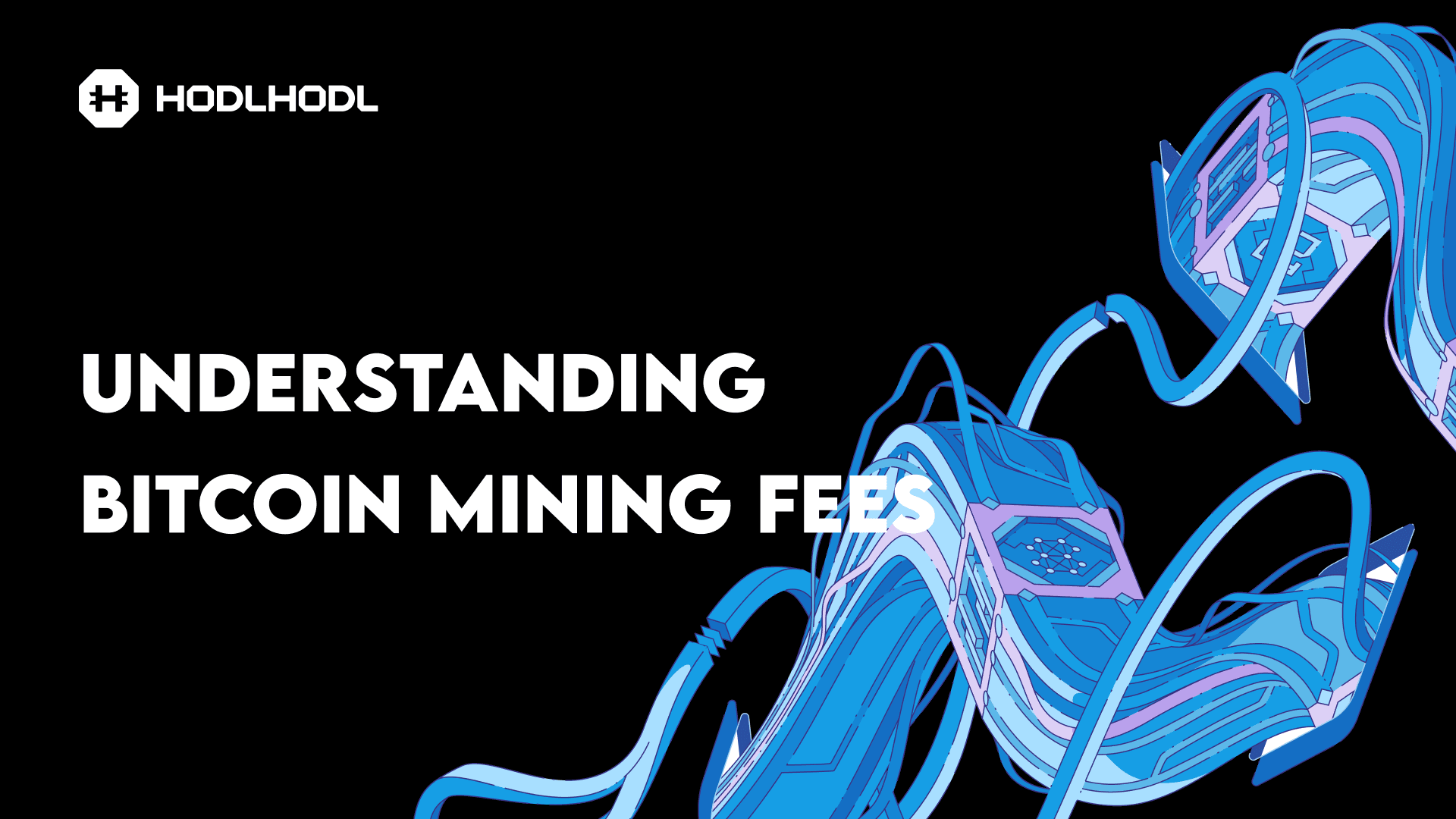 Understanding Bitcoin Fees
Understanding Bitcoin Fees
The survival and security of the Bitcoin network are heavily dependent on bitcoin transaction fees. A bitcoin transaction fee is influenced by network demand and the transaction's size, and it is crucial for miners as it serves as a vital income source, especially as block subsidies decrease over time.
These fees compensate bitcoin miners for incorporating your transactions into the blockchain, which helps keep the network free from spam and robustly functional. When conducting a bitcoin transaction, you effectively compete in an auction to have miners prioritize it by offering higher fees. This improves the chances that your transaction will be processed in the upcoming block.
Once a predetermined number of coins have entered circulation, the incentive can transition entirely to transaction fees and be completely inflation-free.
Satoshi Nakamoto - source
The complexity of a given transaction—marked by its number of inputs and outputs—has a notable impact on determining its fee level. With SegWit’s implementation making data handling more efficient, this advancement has led to reduced sizes of transactions as well as streamlined associated costs.
Several elements influence Bitcoin transaction fees. Among these are how much data is carried within each individual transaction along with current demand levels for available space within blocks on the chain. High traffic periods often lead to congestion on the network, which then results in increased costs due to heightened competition amongst users vying for their transactions’ inclusion.
Transaction fees are primarily determined by network congestion and demand for limited block space.
How Transaction Fees Are Determined
 How Bitcoin Transaction Fees Are Determined
How Bitcoin Transaction Fees Are Determined
The fees for executing a bitcoin transaction are influenced by both the amount of data the transaction entails and how much demand there is for space within the blockchain. Fees required for maintaining network efficiency and compensating miners are essential components of this system. With a cap on each Bitcoin block’s size at 4 megabytes, only so many transactions can be included.
Consequently, when more people vie for that limited space in times of high demand, they must offer up increased fees to have their transactions prioritized and confirmed. This system regulates itself according to market conditions, ensuring those desiring swift processing pay higher fees while individuals who aren’t in a rush may opt to incur lower costs.
When it comes to adding transactions into new blocks, miners tend toward selecting ones with heftier fees attached as this strategy enhances their earnings. They evaluate which submissions provide an optimal balance between fee size and data volume because such choices benefit them financially when integrated into the forthcoming block.
This mechanism instigates competition amongst users over fee selection relative to desired confirmation speeds for their transfers. By grasping these principles governing transaction charges—including miner incentives—you’ll be better equipped to adeptly manage your own expenses during transacting on the network.
The Role of UTXOs in Fee Calculation
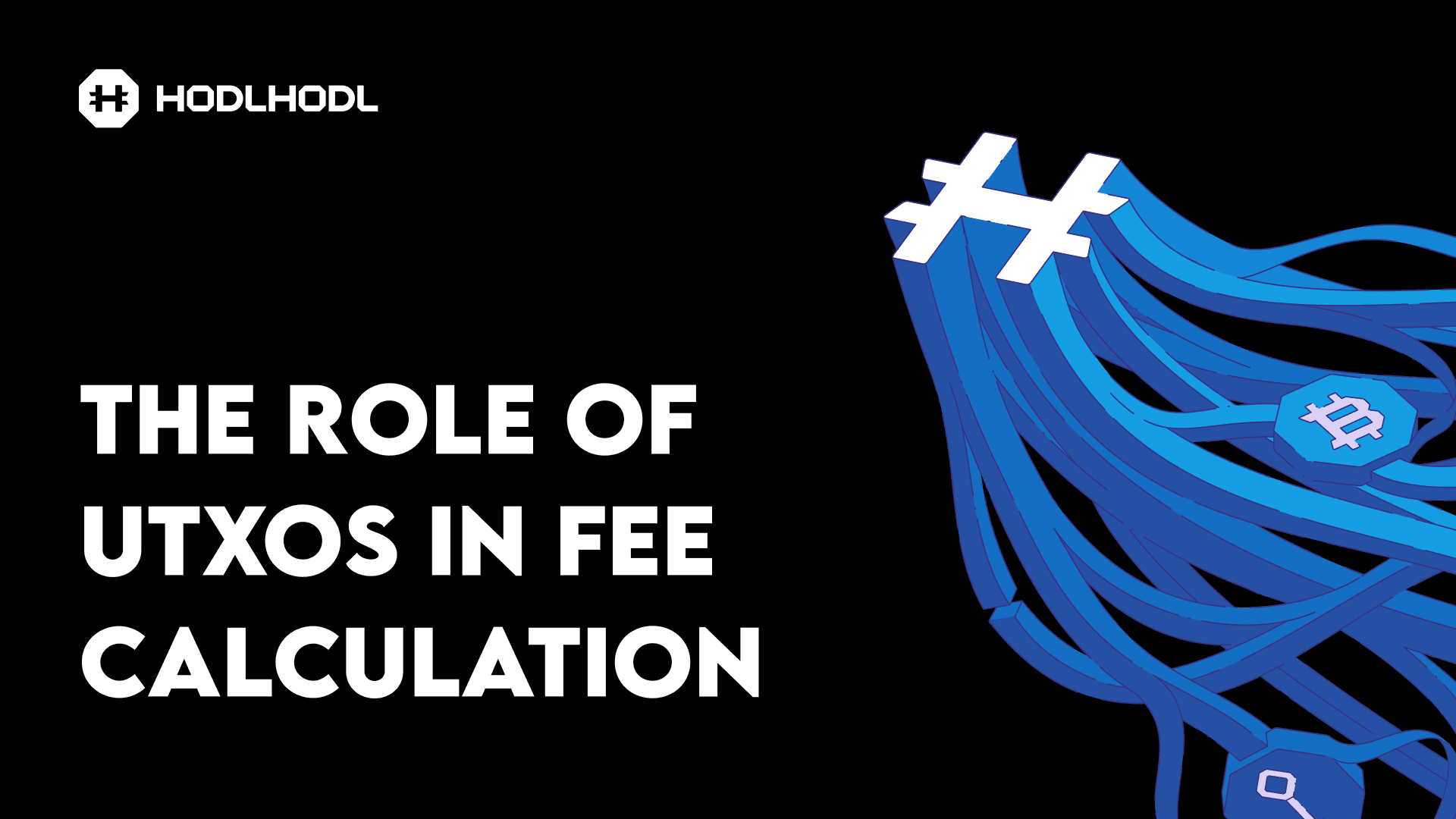 The Role of UTXOs in Fee Calculation
The Role of UTXOs in Fee Calculation
Unspent Transaction Outputs, or UTXOs, serve as the fundamental components of transactions. They are used as inputs in every transaction and can hold various amounts of value. When a transaction includes numerous UTXOs, its data size increases accordingly.
A small transaction paying the same fee as a larger transaction is more likely to be prioritized by miners, as profitability is a key concern in the selection process. As a result, transactions with larger data sizes typically attract higher fees due to the increased amount of information that needs processing by the network.
UTXOs play an essential part in controlling and minimizing transaction fees within the Bitcoin system.
Unspent Transaction Outputs (UTXOs) are Bitcoin amounts received but not yet spent. They become inputs for new transactions.
Impact of SegWit on Transaction Fees
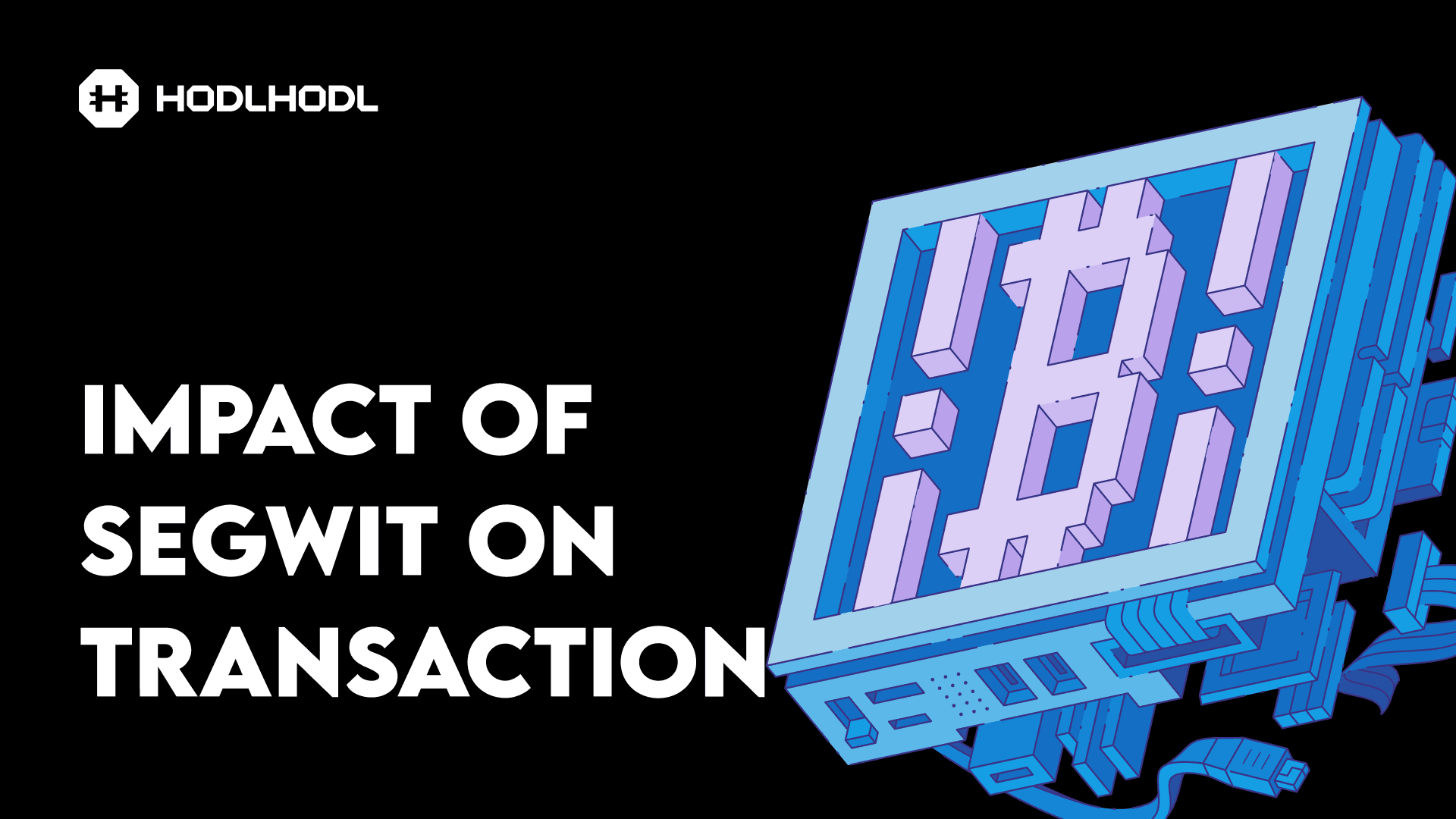 Impact of SegWit on Transaction Fee
Impact of SegWit on Transaction Fee
Segregated Witness (SegWit) has revolutionized the Bitcoin network by enhancing its scalability. It achieves this by shrinking the size of transactions, enabling more to be included within each block. As a result of the smaller transaction size, users may experience lower fees, particularly during periods when there’s a surge in demand on the network. By opting for SegWit-enabled transactions, users stand to gain from reduced costs associated with their bitcoin activities, especially when activity spikes.
"SegWit is a network upgrade that reduces transaction sizes by separating signature data, resulting in lower fees."
The influence that SegWit exerts on transaction fees is considerable. In times where competition for block space intensifies and traditional transactions can attract hefty fees, SegWit alleviates some of these costs by compacting transaction sizes which helps keep access equitable across all participants in the network.
By implementing SegWit into their operations, users are afforded opportunities for reducing expenses while expediting their overall transaction process due to lower required fees and heightened efficiency within blocks on the Bitcoin blockchain.
Market Dynamics and Fee Fluctuations
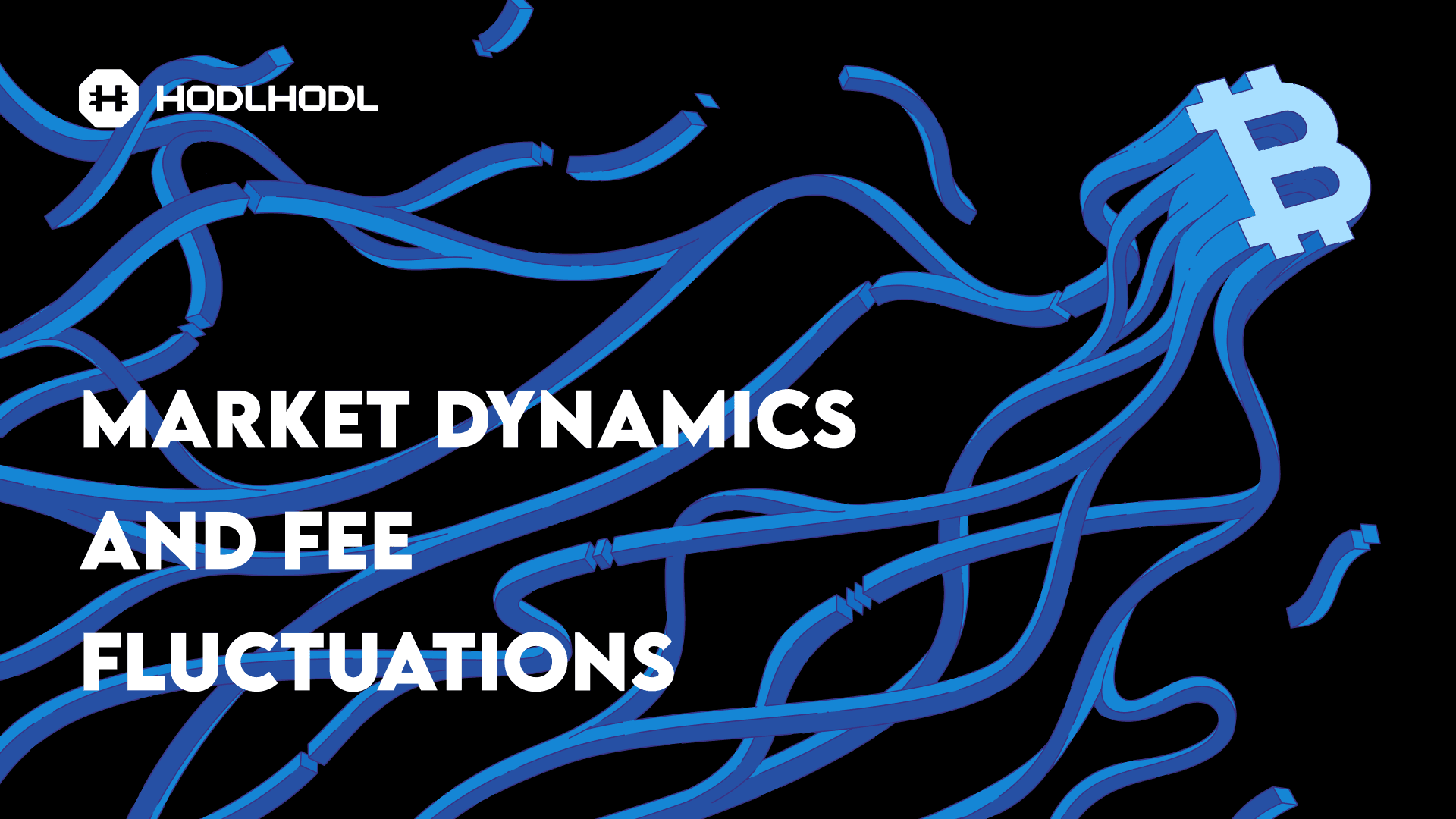 Market Dynamics and Fee Fluctuations
Market Dynamics and Fee Fluctuations
The operation of the Bitcoin network is comparable to a market where the transaction fee is governed by supply and demand. When there’s a surge in trading activity, leading to increased demand, bitcoin transaction fees can rise substantially as users vie for faster processing of their transactions, which increases the cost. On the other hand, during times when demand is low, transaction fees on the network typically drop, allowing for more economical transactions.
Grasping these fluctuations tied to market forces is key to effectively managing your expenses related to bitcoin transaction fees. The charges can vary with changes in both user engagement and overall network action. Keeping an eye on such variations helps you plan out when it’s best to execute your transactions at lower costs or decide if higher rates are worth it for prompt confirmations during busy periods.
Armed with this understanding about how fee levels adapt within the Bitcoin system based on active usage patterns provides you with strategic advantages—enabling smarter choices that refine your spending involved in making transactions on the network.
Managing Bitcoin Transaction Fees on Hodl Hodl
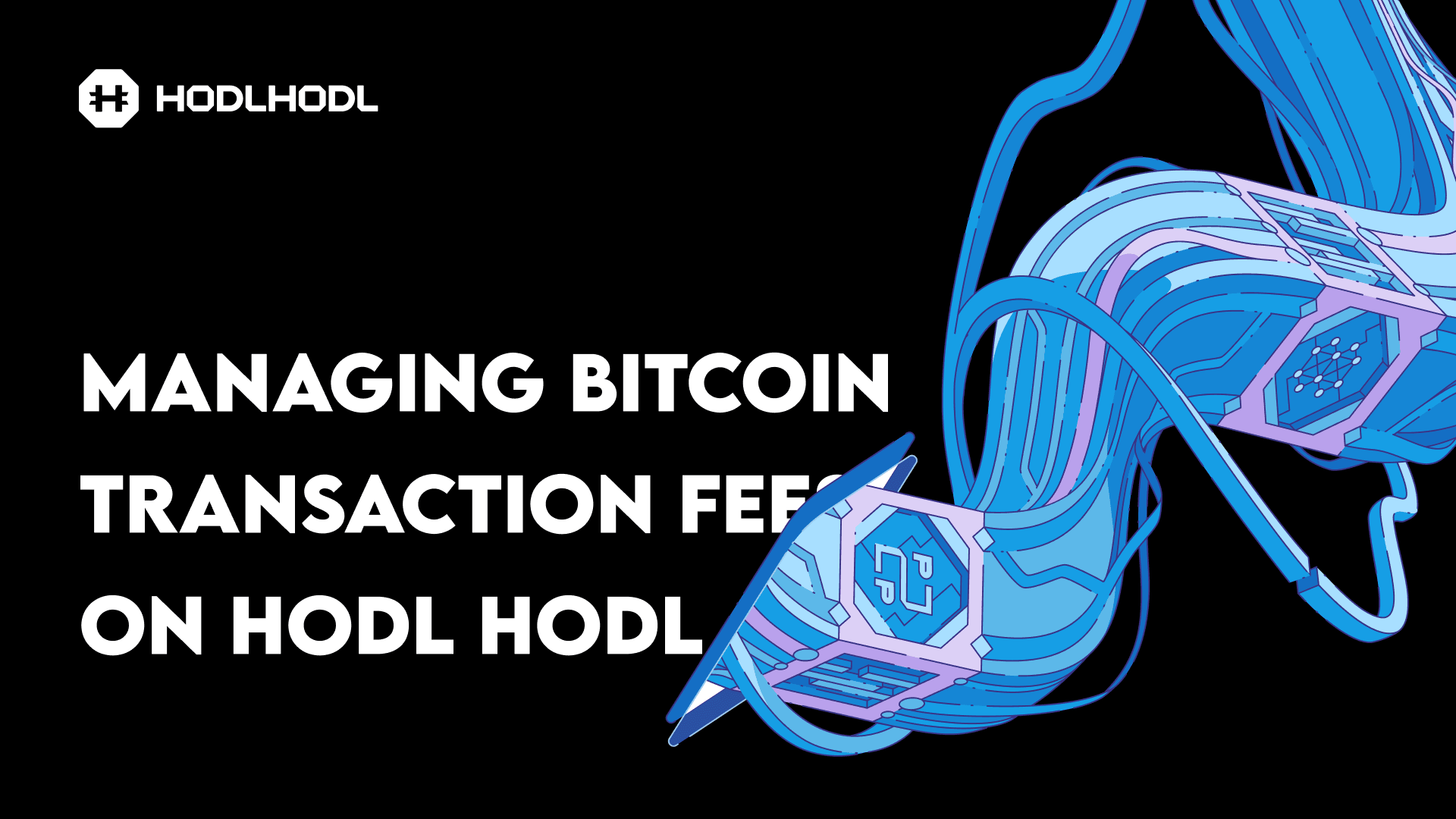 Managing Bitcoin Transaction Fees on Hodl Hodl
Managing Bitcoin Transaction Fees on Hodl Hodl
Hodl Hodl offers a suite of options that allows individuals to adeptly control their Bitcoin transaction fees. Unlike bitcoin exchanges, which charge separate fees for their services, distinguishing them from mining fees, Hodl Hodl empowers users to tweak the platform’s settings, allowing them to tailor their transaction costs in line with the prevailing conditions of the Bitcoin network. By doing so, users can conserve funds and improve their trading activities by adjusting fee levels as market dynamics shift.
Within Hodl Hodl’s interface, participants have the liberty to designate whether they prefer high, medium or low fees for their transactions depending on how quickly they wish them processed within the network’s traffic flow. This adaptability provides users with an instrumental resource for steering through bitcoin transaction expenses efficiently on Hodl Hodl.
Setting Custom Fee Rates on Hodl Hodl
On Hodl Hodl, users can easily choose custom fee rates based on urgency, with options for low, medium, or a higher fee.
Many wallets, including those on Hodl Hodl, offer built-in fee estimation tools that suggest fees based on current network activity and desired confirmation times. This feature allows users to balance transaction speed and cost effectively, ensuring they get the best value for their money.
Strategies to Avoid Stuck Transactions
To prevent delays in processing your bitcoin transaction, especially when the network is experiencing heavy traffic, it’s important to select a suitable fee rate. Paying insufficient fees for a bitcoin transaction could lead to it becoming lodged in the bitcoin pool, potentially causing days of delay. Setting a competitive fee that aligns with the prevailing conditions on the network is crucial.
Conducting transactions during times when there is less activity on the network can result in quicker confirmations. Employing mechanisms like replace-by-fee (RBF) provides an opportunity to modify the fee if your transaction faces setbacks. By adopting these tactics, you can circumvent having transactions that get stuck and guarantee more efficient handling of your transactions.
The Economics
The financial underpinnings of Bitcoin mining are heavily dependent on the role of transaction fees to uphold the stability and longevity of the Bitcoin network. On-chain fees incentivize miners to include transactions in the blockchain by compensating them for the volume of data being processed and the demand for transaction confirmations.
As more transactions occur, miners benefit from an increased source of revenue through these fees. Despite comprising roughly 5% of a miner’s total earnings at present, these fees play a pivotal role in compensating for the diminishing block rewards that miners collect. The halving process means that reliance on transaction fees will become ever more significant for sustaining miner income levels.
For the continued fortification of network security, it is essential that transaction fees remain as an incentive for miners. They juxtapose their operational costs with potential fee-derived gains to ensure profitable operations. By optimizing their approach using current data trends and adapting to varying conditions within the bitcoin ecosystem, miners can maximize profits while simultaneously bolstering overall network protection.
Transition from Block Subsidy to Transaction Fees
As the block subsidy declines, transaction fees are set to become a more significant source of income for miners.
This shift underscores the critical role that transaction fees play in maintaining the Bitcoin network and providing sufficient remuneration for miners.
Cost-Benefit Analysis for Miners
Under the relentless strain to counterbalance their operational expenses with possible income from transaction fees, miners are tasked with a delicate financial act. Flat fee structures can significantly impact miner profitability, as they may either simplify the fee calculation or reduce the incentive for processing larger transactions.
Miners prioritize larger transactions only if fees proportionally compensate the extra data processed. Through adept handling of this equilibrium, miners can maintain the viability of their operations and persist in fortifying the security of the Bitcoin network.
Conducting this assessment is vital to ascertain whether mining endeavors are economically feasible.
The Importance of Bitcoin Transaction Fees for Network Security
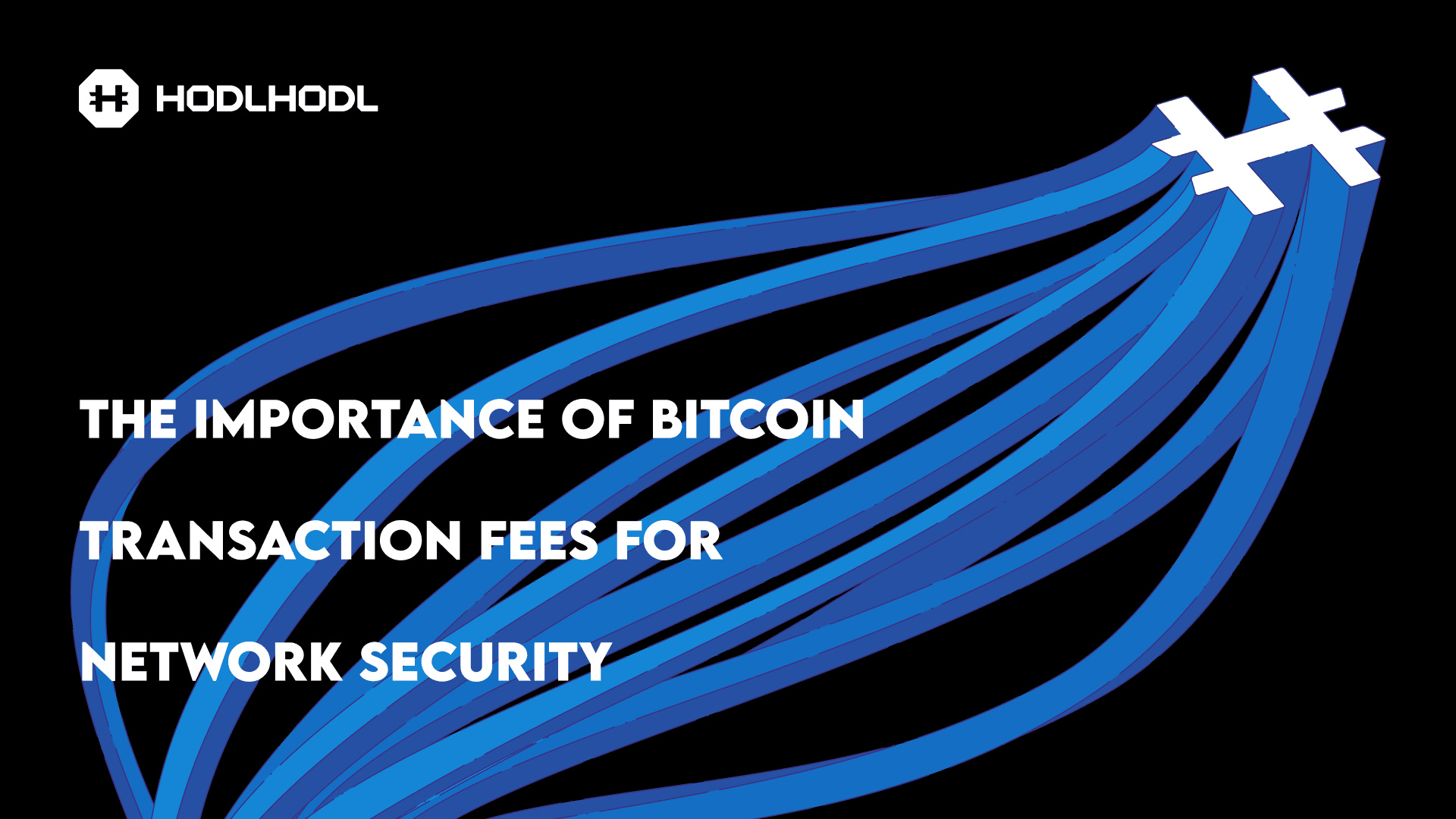 The Importance of Bitcoin Transaction Fees for Network Security
The Importance of Bitcoin Transaction Fees for Network Security
Fees associated with bitcoin transactions are crucial in bolstering the security and functionality of the Bitcoin network. These transaction fees serve as a significant source of revenue for miners, who are thereby encouraged to actively partake in the validation process of transactions.
The financial rewards provided by transaction fees promote network security and deter nefarious actions by making such exploits cost prohibitive. Given that block space is finite, these transaction fees help prioritize which transactions get processed first, effectively preventing spam from clogging up the system and preserving network performance.
The importance of transaction fees extends to sustaining both security and decentralization within the Bitcoin ecosystem. By compensating miners through these fees, it motivates continuous support for safeguarding the integrity of this cryptographic domain against potential abuses like unwarranted spamming tactics—ensuring its sustained reliability and operational flow. Implementing a fee for each bitcoin transaction proves integral to this entire mechanism’s survival and robustness.
Preventing Spam Transactions
By implementing transaction fees, the network raises the cost associated with conducting a multitude of low-value transactions, which is an effective strategy for preventing spam transactions. The imposition of a fee on every transaction promotes the judicious use of resources and curtails harmful activities.
Such fees are instrumental in bolstering security within the network as well as its operational effectiveness, due to their ability to thwart unwanted spam transactions.
Encouraging Miner Participation
Elevated fees for transactions provide a greater attraction to miners, which in turn bolsters the resilience and security of the Bitcoin network. Such fees are crucial because they offer an incentive for miners to engage in validating transactions and maintaining the network’s security.
Maintaining competitive fees is vital to ensure continuous participation from miners, thereby contributing to the stability of the network.
Advanced Fee Management Strategies
It is crucial for users to adopt sophisticated strategies for fee management in order to reduce expenses and optimize the efficiency of their transactions. Utilizing options such as replace-by-fee (RBF), individuals can modify their fees in real time, which facilitates a quicker confirmation of bitcoin transactions, particularly during times when the network experiences high traffic. Such approaches empower users to effectively maneuver through Bitcoin’s variable fee market, thus resulting in notable cost reductions.
By incorporating techniques like batch processing and UTXO consolidation into their transaction processes, users stand to substantially lower the fees associated with Bitcoin transactions while boosting overall efficiency. Leveraging these advanced tactics enables more economical and streamlined operations within the realm of Bitcoin transactions.
Batch Processing and Consolidation
Grouping several transactions into a single batch can diminish the total transaction fees incurred. By merging UTXOs, the input count is lessened, which results in smaller sized transactions and subsequently lower fees, enhancing the system’s ability to process transactions with greater efficiency.
During times of heightened demand on the network, both techniques—transaction batching and UTXO consolidation—are effective in reducing transaction costs by making more efficient use of available network space.
Timing Transactions
The cost of bitcoin transaction fees can vary significantly depending on the timing of your transactions. During times when there is a high level of activity on the network, you’ll likely encounter higher fees. If you choose to conduct your transactions during quieter periods when there’s less demand for block space, you could benefit from lower fees—for instance, transacting during off-peak hours might result in paying minimal fees due to reduced competition for block inclusion.
Carefully planning when to execute transactions can lead to significant reductions in mining costs. Keeping an eye on how congested the network is will aid in choosing appropriate fee rates and prevent delays with stuck transactions while ensuring swift confirmations at a lesser expense.
By acquiring knowledge about patterns in network activity and using this information wisely, it’s possible to refine how much one pays in Bitcoin transaction fees effectively.
Lightning Network Fees
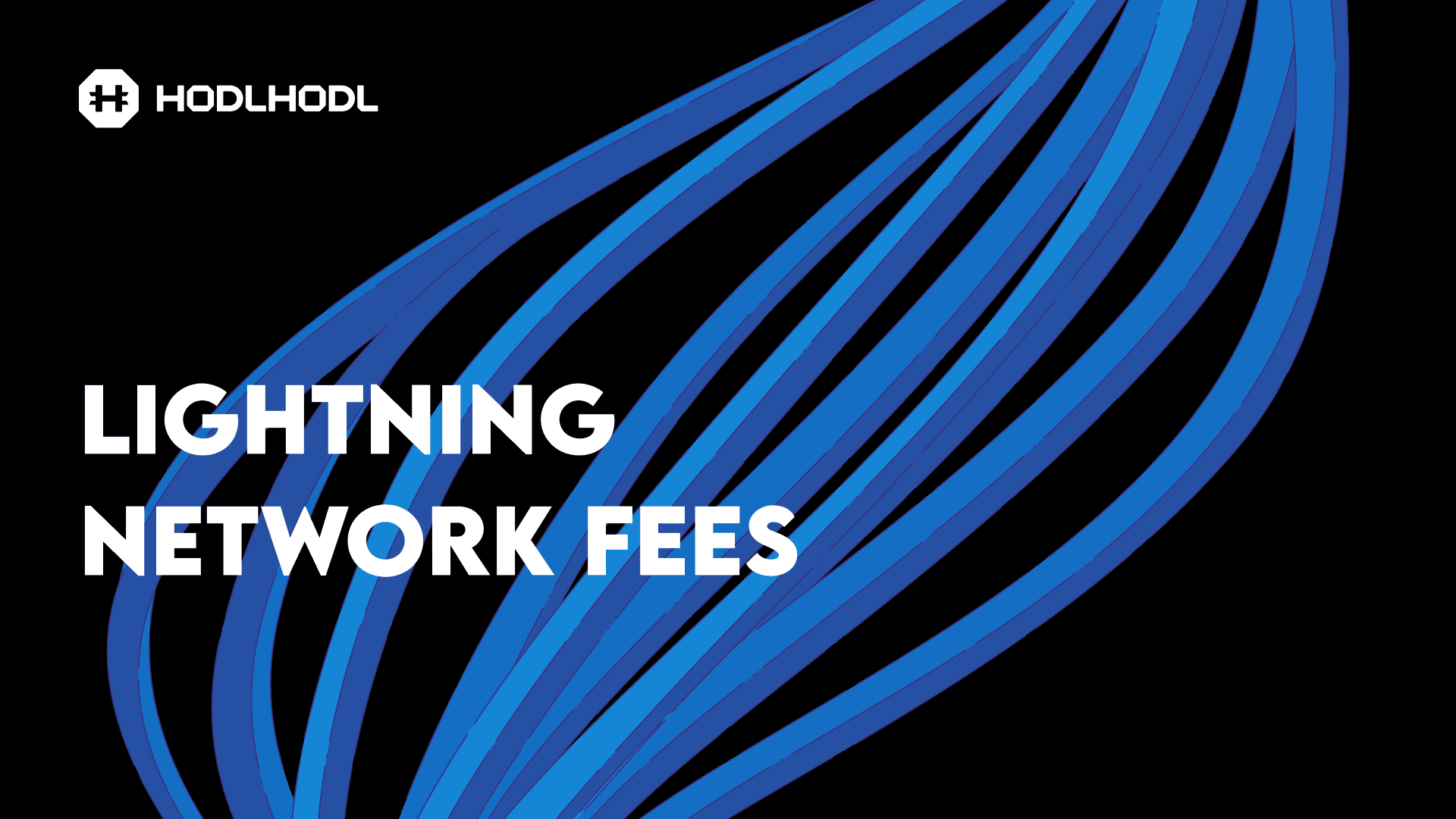 Lightning Network Fees
Lightning Network Fees
The Lightning Network presents a fee system distinct from conventional on-chain Bitcoin transaction costs. Fees associated with the Lightning Network are only applied when a payment is successfully executed, unlike those of on-chain transactions.
Within this network, fees are determined for each peer and channel, giving individuals the autonomy to set their own pricing strategies. Two principal types of fees exist: base fees that address computational expenses, and fee rates that fluctuate in relation to the amount of funds within a specific channel.
What are the transaction fees across any monetary network? It’s pretty routine to pay 1%, 2%, 3% to move something around. If Bitcoin gets to be $100 trillion and there’s 1% transaction fees, … it’s $1 trillion a year in transaction fees!
Michael Saylor is the Executive Chairman of Strategy - source
Compared to standard on-chain bitcoin transactions, the Lighting Network often proposes more economical fee options. The unique structure of its fees is shaped by various elements such as available liquidity and policy decisions made by node operators. Speaking, an abundance of liquidity can lead to diminished costs due to an increase in readily accessible resources easing transaction flow.
Users who grasp these influencing factors have the advantage when it comes to minimizing their expenditure during transactions conducted over the Lightning Network. Such knowledge empowers them towards judicious use of this platform while managing payments effectively through informed choices regarding cost-efficiency.
Factors Influencing Lightning Network Fees
Fees on the Lightning Network are influenced by liquidity and node operator policies. Higher liquidity often leads to lower fees, as more funds can be moved without causing congestion.
Node operators can set custom fees based on their operational costs and market conditions, further influencing transaction costs. Understanding these factors helps users make informed decisions and optimize their transaction fees on the Lightning Network.
Tools and Resources for Fee Estimation
Users have access to various tools and resources designed to assist with estimating fees for Bitcoin transactions. Services such as BitcoinFees offer current network data that recommend ideal transaction fees, enabling users to determine the appropriate cost needed for their Bitcoin transaction to be promptly confirmed without paying excessively or experiencing delays.
Numerous Bitcoin wallets incorporate sophisticated fee estimation functions which empower users by suggesting optimal fees tailored to current network circumstances and specific needs of their transactions. By taking advantage of these features, users can ensure their bitcoin transactions are processed both effectively and economically.
Fee Plotting Sites
Websites designed to chart Bitcoin transaction fees offer a crucial service by offering estimates of the fees paid for transactions. These internet-based tools furnish users with current fee estimations that reflect prevailing network conditions and correlate with the size of the transaction, presenting these charges in satoshis per byte to aid users in understanding their potential transaction expenses.
Leveraging these fee plotting sites allows individuals to circumvent excessive payment while securing swift confirmation for their Bitcoin transactions on the network.
Wallet Features for Fee Estimation
Numerous Bitcoin wallets offer assistance to users by providing estimates for suitable fee rates. Hodl Hodil, as an example, provides the option for users to choose between high, medium, or low fees that correspond with their transaction needs and the current market situation.
Such sophisticated functionalities grant users the capability to strike a balance between the speed of their transactions and associated costs. This ensures that their transactions are both executed promptly and economically.
Summary
Grasping the intricacies of Bitcoin transaction fees is essential for those involved with Bitcoin. Learning the nuances of fee calculation and adopting sophisticated methods to reduce expenses can greatly improve your dealings with Bitcoin transactions.
Utilizing resources such as sites that chart fees, along with functionalities offered by wallets, allows you to fine-tune the amount you pay and helps in getting your transaction swiftly confirmed on the network. The secret to effective bitcoin interactions hinges on a deep comprehension of network mechanics and making choices based on knowledge. Enjoy your trading!
Frequently Asked Questions
What are Bitcoin mining fees?
Bitcoin mining fees are what you pay to get your transactions added to the blockchain by miners. They’re crucial for keeping the network running smoothly and secure.
How are Bitcoin transaction fees determined?
Bitcoin transaction fees depend on how much data your transaction has and how busy the network is. Miners usually pick the transactions that pay the highest fees per byte first.
What is the role of SegWit in reducing transaction fees?
SegWit helps cut down transaction fees by making transactions smaller, so more can fit in each block, especially when the network gets busy.
This means you pay less even when the traffic spikes!
How can I manage my transaction fees on Hodl Hodl?
You can manage your transaction fees on Hodl Hodl by choosing custom fee rates that fit your needs—go for high, medium, or low based on the current network conditions.
This way, you keep costs in check while making your trades!
What are some advanced strategies for minimizing Bitcoin transaction fees?
To minimize Bitcoin transaction fees, try batching your transactions, consolidating UTXOs, timing your transactions during off-peak times, and using the replace-by-fee (RBF) option.
These strategies can really help you save on costs!
Reach us
-
Hodl Hodl trading platform: hodlhodl.com
-
Lend at Hodl Hodl: lend.hodlhodl.com
-
E-mail: [email protected]
-
Twitter / X: x.com/hodlhodl
-
Telegram: t.me/HodlHodl
-
Youtube: youtube.com/c/HodlHodl
-
Nostr: npub1yul83qxn35u607er3m7039t6rddj06qezfagfqlfw4qk5z5slrfqu8ncdu
This content was created with AI assistance and manually reviewed for accuracy and readability.